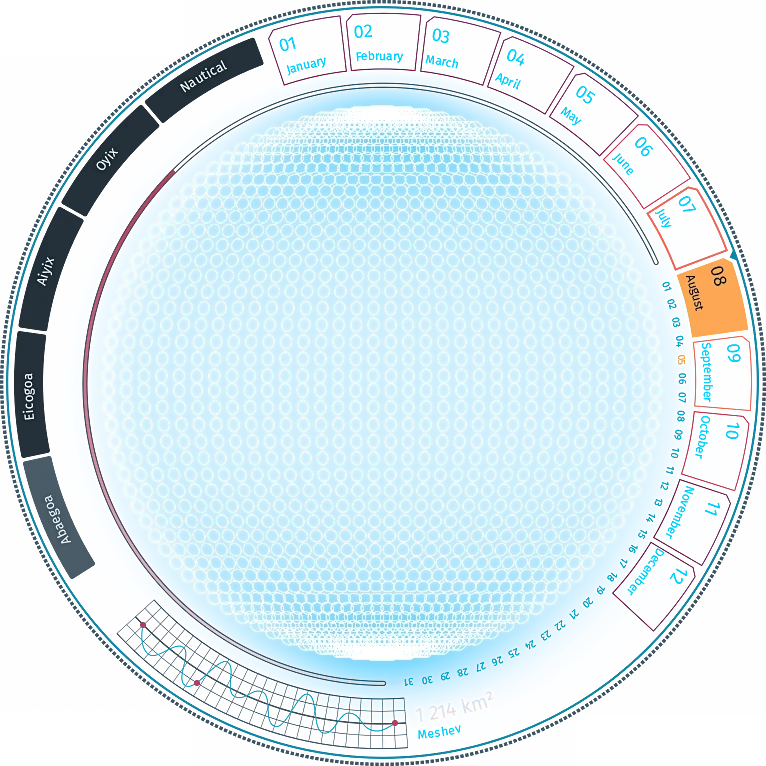Gelarhagia Pesma (gɜlɔːɹɔːgɪɑ pɛzmɑː)
Transmission & Vectors
The plague is not infectious during the incubation stage. It becomes infectious during the rash stage, when it is expelled from the body through the skin, during which is can be transmitted directly through contact with an infected individual, or indirectly through water or food that has been contaminated by the pus from sores. The bacteria is also transmitted in the blood, but this is not considered a major source of infection.
Causes
The Gelarhagia Pesma plague is caused by a small, rod-shaped bacterium. Because this bacterium is difficult to identify, it was not discovered until the plague had reached its peak. The bacteria are very common in Parina, where swamps provide a fertile breeding ground for them, but they do not appear to affect any other organism other than Krudh. Some Krudh are likely more susceptible to the bacteria than others, and therefore the presence of the bacteria causes the plague. The bacteria most likely feed on the victim's blood or tissues.
Symptoms
The first symptom is a high fever. The fever is followed by a rash, which is usually located on the face and hands. The rash is followed by the appearance of sores, which are filled with pus. The sores are very painful, and are the source of the name of the plague. The sores eventually break, and the victim bleeds profusely. The victim dies shortly after the sores break, usually within a week of the first symptoms.
Treatment
There is no known treatment for the Gelarhagia Pesma plague. Any infected individual will usually die within a week of the first symptoms. Healing magic can be used to minimize the recovery time of an orc that survives the plague, but technology has proven ineffective.
Prognosis
The "Incubation Stage" is the period during which the disease is not yet apparent, but the bacteria has already infected the body. This stage typically lasts between one and two weeks. The following "Rash Stage" is the point at which the plague is apparent. After the sores begin to form and the victim progresses to the "Sores Stage", death is imminent.
Sequela
The most well-known sequela of the Gelarhagia Pesma plague is the large number of Krudh who were left orphaned by the plague. The plague killed so many Krudh that there were very few adults left to care for the children. The surviving Krudh were left with the dilemma of how to care for the children. The Krudh were able to survive because they struck a deal with the human nation of Meshev to provide aid. Parina was colonized by Meshev in as payment for their assistance.
Affected Groups
Adult Krudh were more susceptible to contracting the bacterium of the Gelarhagia Pesma plague. Young orcs (<20 years old) were more resilient to the disease, enabling their immune systems to fight the bacterium. The children were, however, affected indirectly by the plague through the loss of their parents. The population of Parina was mostly rural, so their habits had little to do with the spread of the disease. The disease was not found outside of Parina, so the affected groups were limited.
Hosts & Carriers
Any orc that is infected with this condition is a carrier. It is unknown whether the disease can survive outside of a host. The bacteria have not been observed or tested on other organisms, but it is likely that it would not infect other species.
Prevention
To prevent the Gelarhagia Pesma plague from spreading, it is necessary to avoid contact with infected individuals. This can be achieved by avoiding any individual who has any symptoms of the plague. It is also necessary to avoid any individual who has been in contact with an individual who is infected with the disease.
Epidemiology
Gelarhagia Pesma is endemic to Parina, because it has only been recorded in the Krudh settlements there. It is not known how the disease came to the Krudh settlements, but it is suspected that it was brought in by a visitor.
History
The first recorded case of the plague was in the year 408 N.E. in the settlement of Demim. The disease was first discovered when a large number of Krudh began displaying signs of the illness. The disease spread rapidly and within three weeks, the entire region was infected. The Krudh were forced to re-locate, but the plague had already spread. Within a year, the entire Krudh population had been decimated. The cause of the disease was unknown at the time, so it was not known how to prevent the spread of the disease.
When the adult population had dwindled and the Krudh were unable to handle the situation on their own, they turned to the human nation of Meshev for aid. The Meshevians provided medical aid to the Krudh, but could not stop the spread of the disease. The Krudh eventually struck a deal with the United Federation of Meshev for aid in exchange for their territory of Parina. This resulted in Meshev taking control of Parina. Meshevians have always claimed that they were doing the Krudh a favor by taking control of the land, but the Krudh were never happy with the arrangement.
The disease has not been seen since.
Cultural Reception
Gelarhagia Pesma is considered to be one of the worst natural disasters in Krudh history. It is still a source of fear and dread among Krudh, who are very suspicious of any disease that affects them.
The Gelarhagia Pesma plague played a major role in the history and culture of the orc race. The disease wiped out most of the adults, leaving the children orphaned. This led to the Meshevians taking control of Parina and the situation, which the Krudh have never liked. The Krudh have never forgotten the "Meshevian Visitation" and have taught their children about it ever since. The Krudh are still very suspicious of disease and are cautious about accepting help from outsiders.



Comments